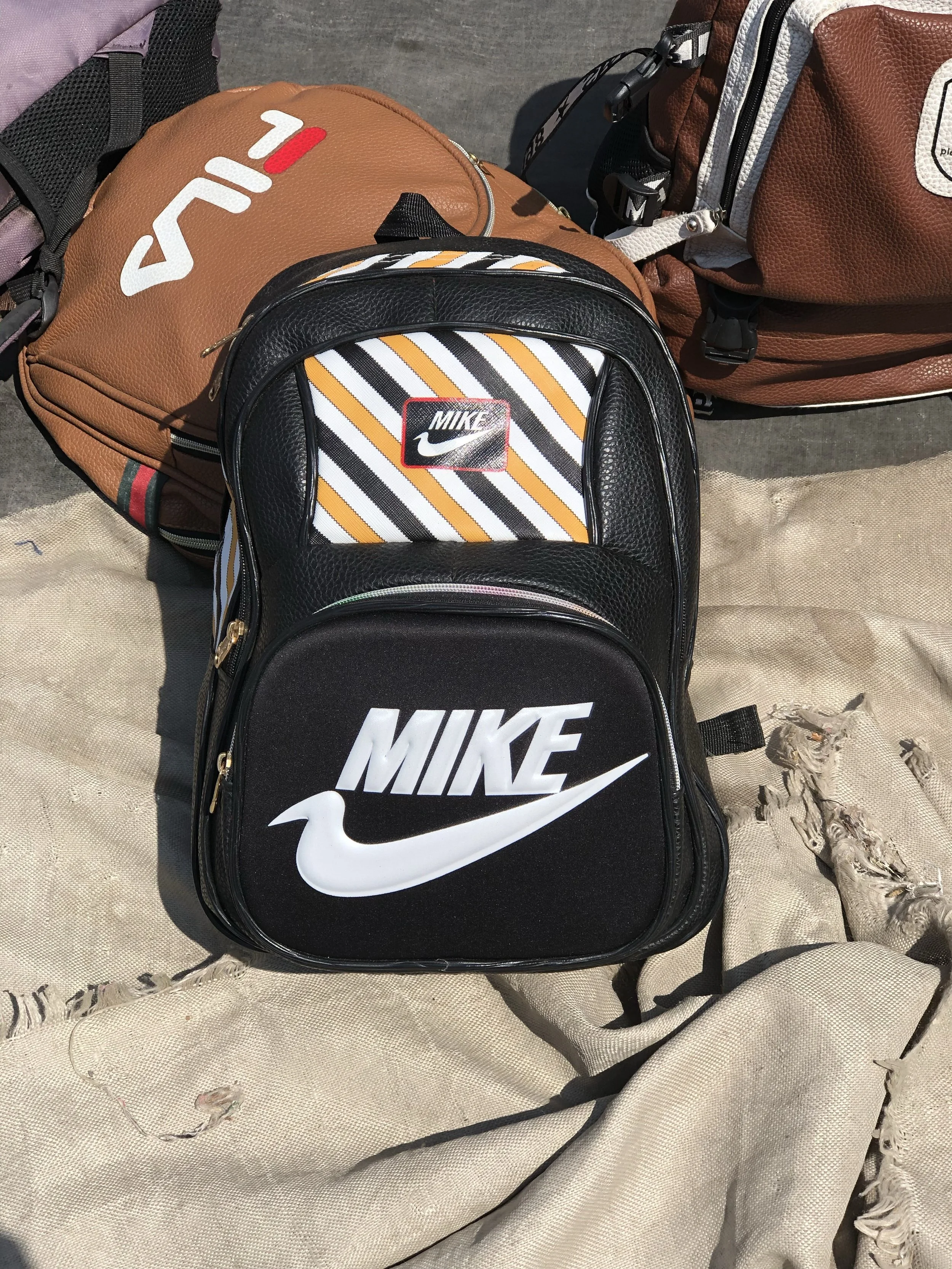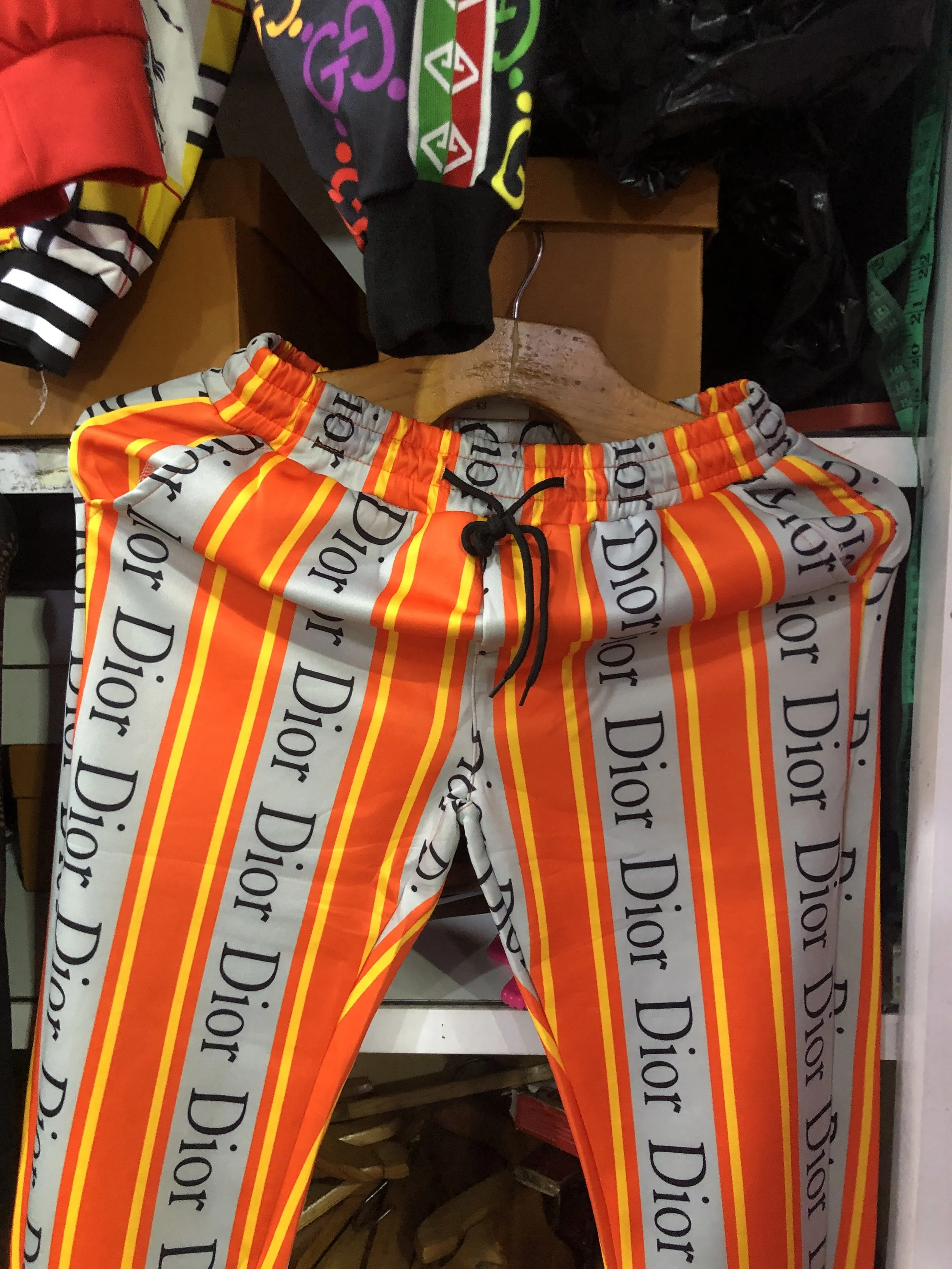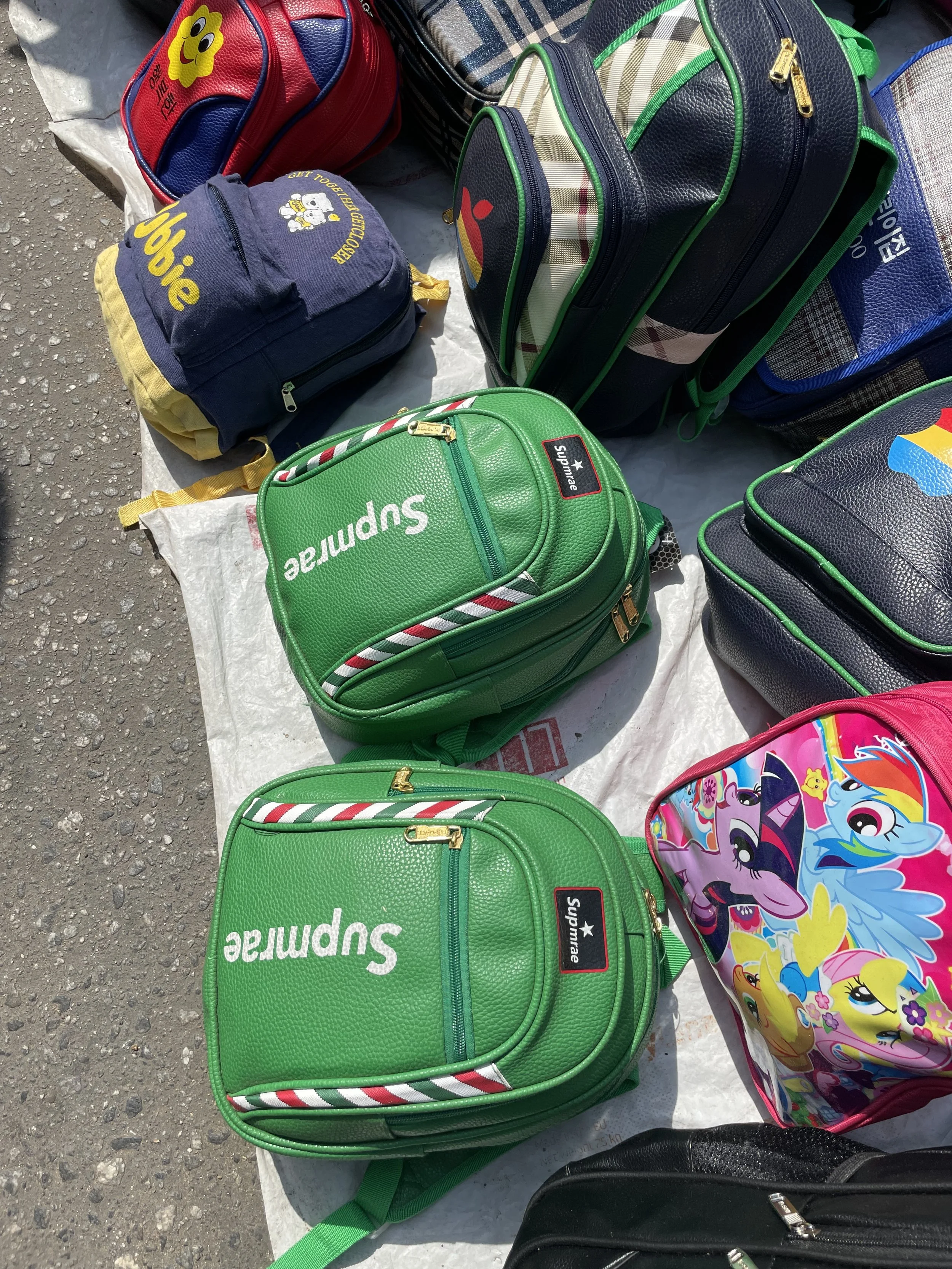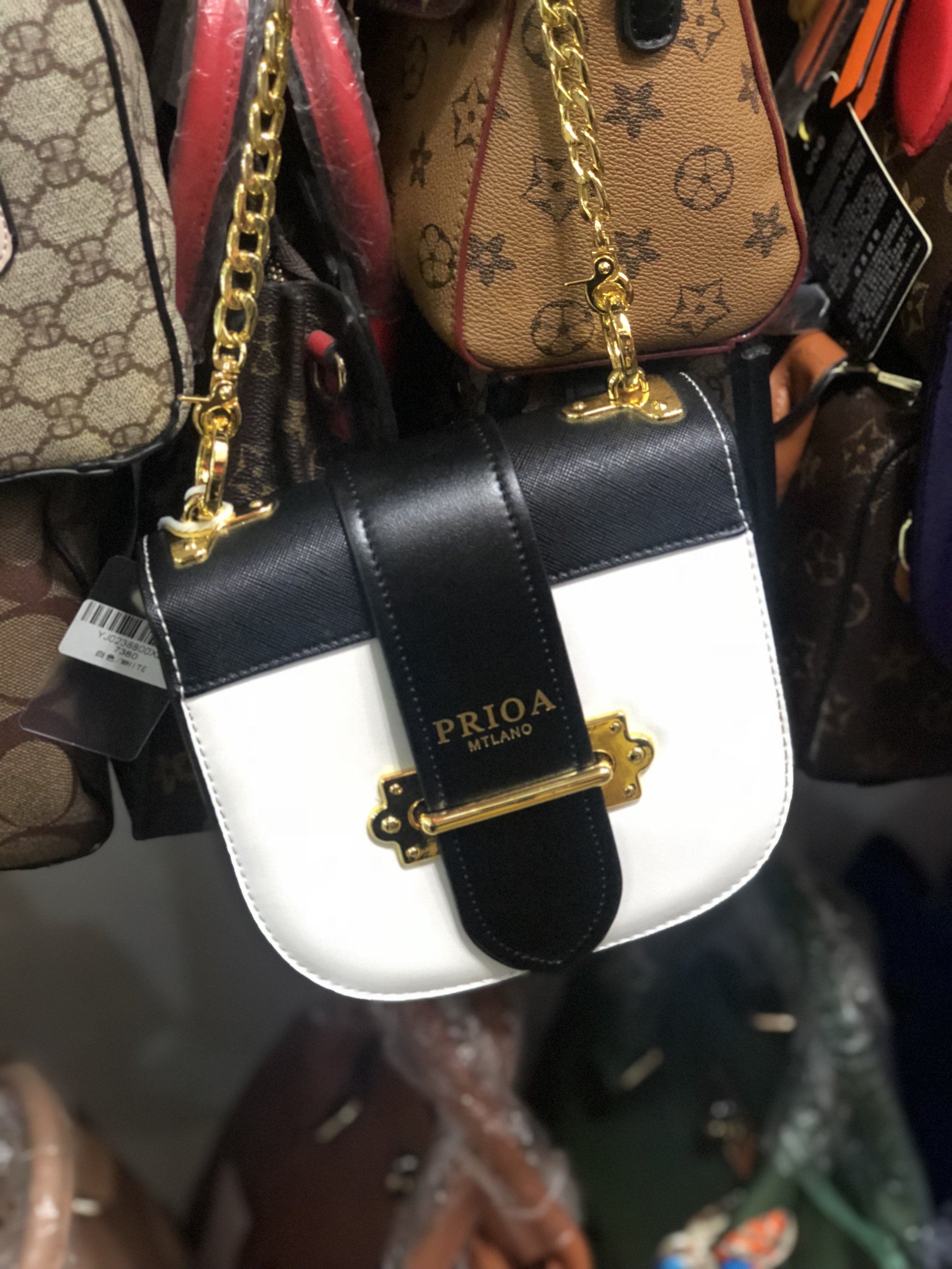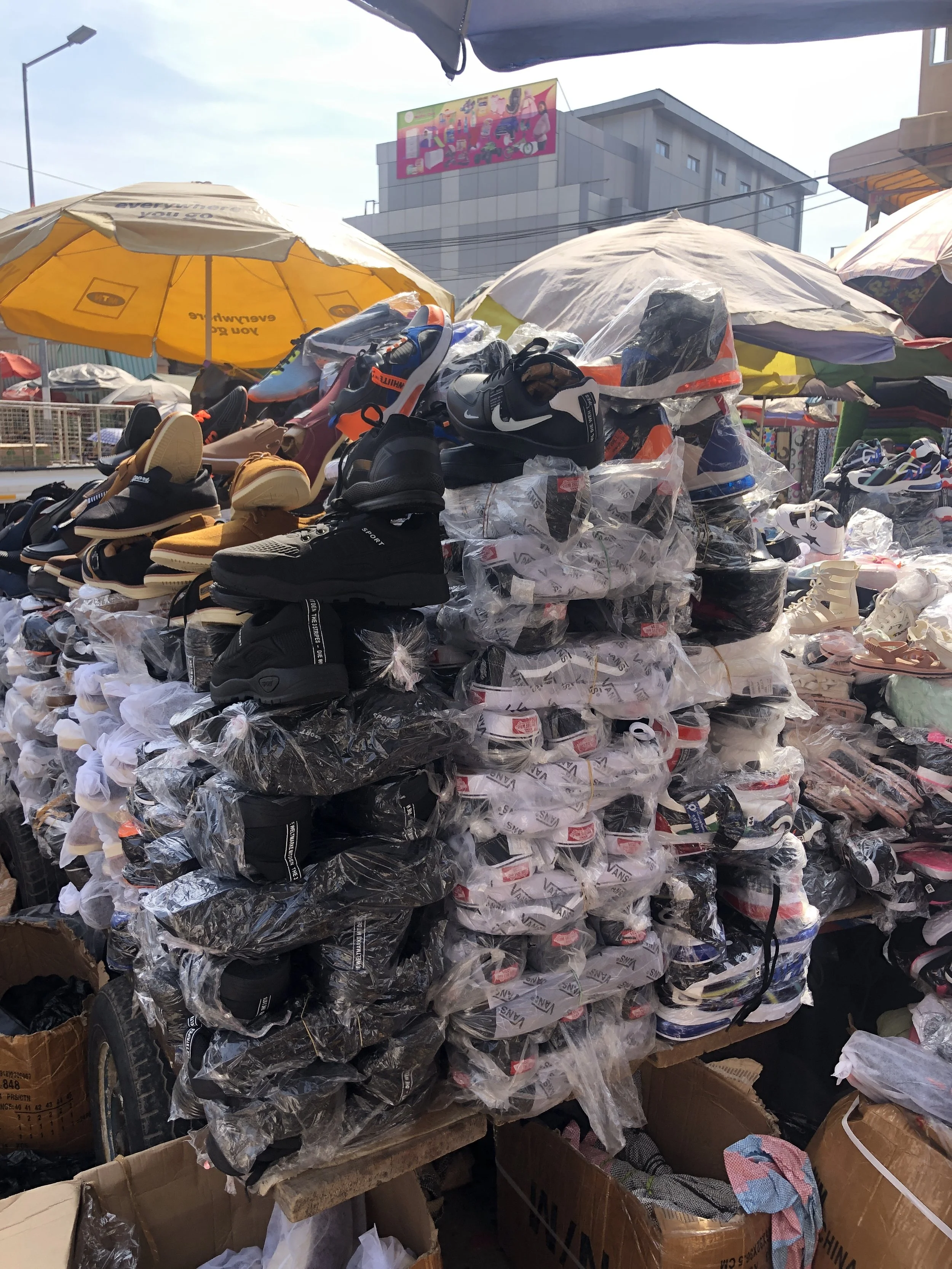How original the fake can be
From time immemorial, fakes of authentic goods, usually clothing and footwear have been rife. There are numerous names, from fakes, knockoffs, replicas, and counterfeits. No matter the name, we all have an experience with this. The fake epidemic is a craze all around the world, and the same can be said about Ghana. Doing a deep dive into Ghana’s emerging fashion scene, you realize that the Ghanaian markets are saturated by fakes.
This revelation raises a lot of questions about how knowledgeable the average buyer and seller know about their clothing. Realfake spearheaded the research into this intriguing topic on the quest to find answers. Carmen Hogg and I, on the hunt for answers, headed to Kantamanto, Ghana’s biggest second-hand clothes market in the heart of the capital.
From the screams of sellers to the commotion and the countless garments on display, walking through this market is an incredible experience. The group went to a streetwear apparel business managed by a connoisseur known as Rasta, probably because of his dreadlocks.
Rasta stands in his clothing shop that sells replica streetwear clothing. When asked if he knows whether his merchandise is fake, he simply says, “It’s fake to those who know and real to those who don’t”. From his answer, the adage “Ignorance is bliss” is reinforced.
His business caters to both young and old. Though you may find much more youth due to the current streetwear scene. For someone who has been doing this for 16 years, he has seen it all and has his theories on why his company is so successful. He attributes a lot of his earlier success to the music industry, abroad and locally. “When they see an artist wearing something, they want it as well,” he says. Now, with a steady stream of clients, he explains how he gains the clothes he sells. To better understand the operation, he calls in a friend, Adamu, who deals in sneakers.
The clothing and sneaker business happened to be run in similar ways. Everything begins with an agent who is usually Ghanaian, living in China. To be successful at this business, you need to have one. The business owners then practice trendspotting with social media to know what’s going to be next. Social media apps like Instagram are used to monitor trends and check on high fashion brands. For Rasta, he sends in designs that are trending so his agent can communicate to Chinese workers to make replicas. Replica clothes are then manufactured and transported to Ghana. When it comes to Adamu, knock-offs for sneakers are constructed in the same factory and transported to the motherland when he recommends that it’s in season.
With this new hull of information, we ask normal individuals in the market about the clothes they love to buy and wear from Kantamanto. Again, we realized that a huge number of people we asked, knew that the clothing they bought were replicas. We found out that, the average buyer only cares about how affordable the clothing is and is not focused on its authenticity. This tells us that people are not bothered by replicas in our markets as long as it’s affordable. It also communicates how people are influenced to buy and wear clothing materials they see from their western idols. These idols may be musicians, actors, or celebrities they follow on social media.
Thanks to the research, we’ve realized that knowing whether clothes or sneakers are fake is a guarded secret. The rise of fashion in Ghana is allowing some buyers to do their research. This has slightly affected the sales of the sellers due to new knowledge. However, average people also just want to look good without breaking the bank for authentic brands. This shows the constantly evolving nature of the Ghanaian replica fashion scene. Whether the fakes will continue to be a staple in the Ghanaian fashion ecosystem or will make way for authentics cannot be stated. We do know that they’re cohabiting right now.

